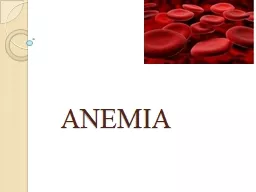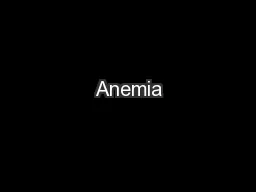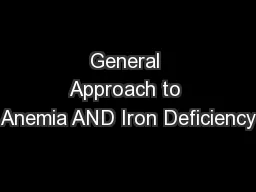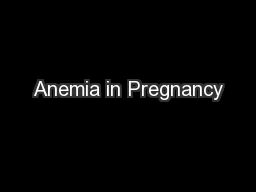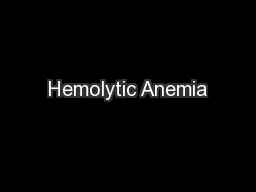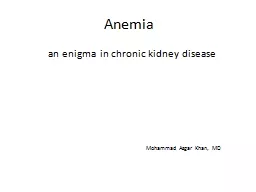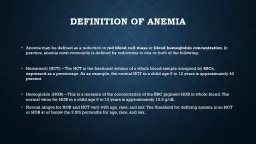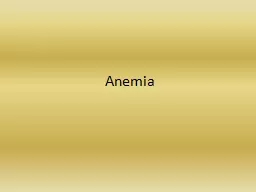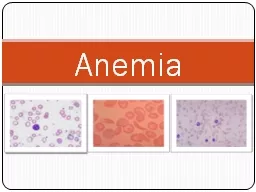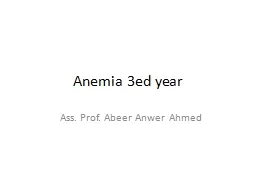PPT-ANEMIA Key points Anemia is not a specific disease state but
Author : clara | Published Date : 2022-02-14
a sign of an underlying disorder There are several kinds of anemia A physiologic approach classifies anemia according to whether the deficiency in erythrocytes
Presentation Embed Code
Download Presentation
Download Presentation The PPT/PDF document "ANEMIA Key points Anemia is not a specif..." is the property of its rightful owner. Permission is granted to download and print the materials on this website for personal, non-commercial use only, and to display it on your personal computer provided you do not modify the materials and that you retain all copyright notices contained in the materials. By downloading content from our website, you accept the terms of this agreement.
ANEMIA Key points Anemia is not a specific disease state but: Transcript
Download Rules Of Document
"ANEMIA Key points Anemia is not a specific disease state but"The content belongs to its owner. You may download and print it for personal use, without modification, and keep all copyright notices. By downloading, you agree to these terms.
Related Documents

